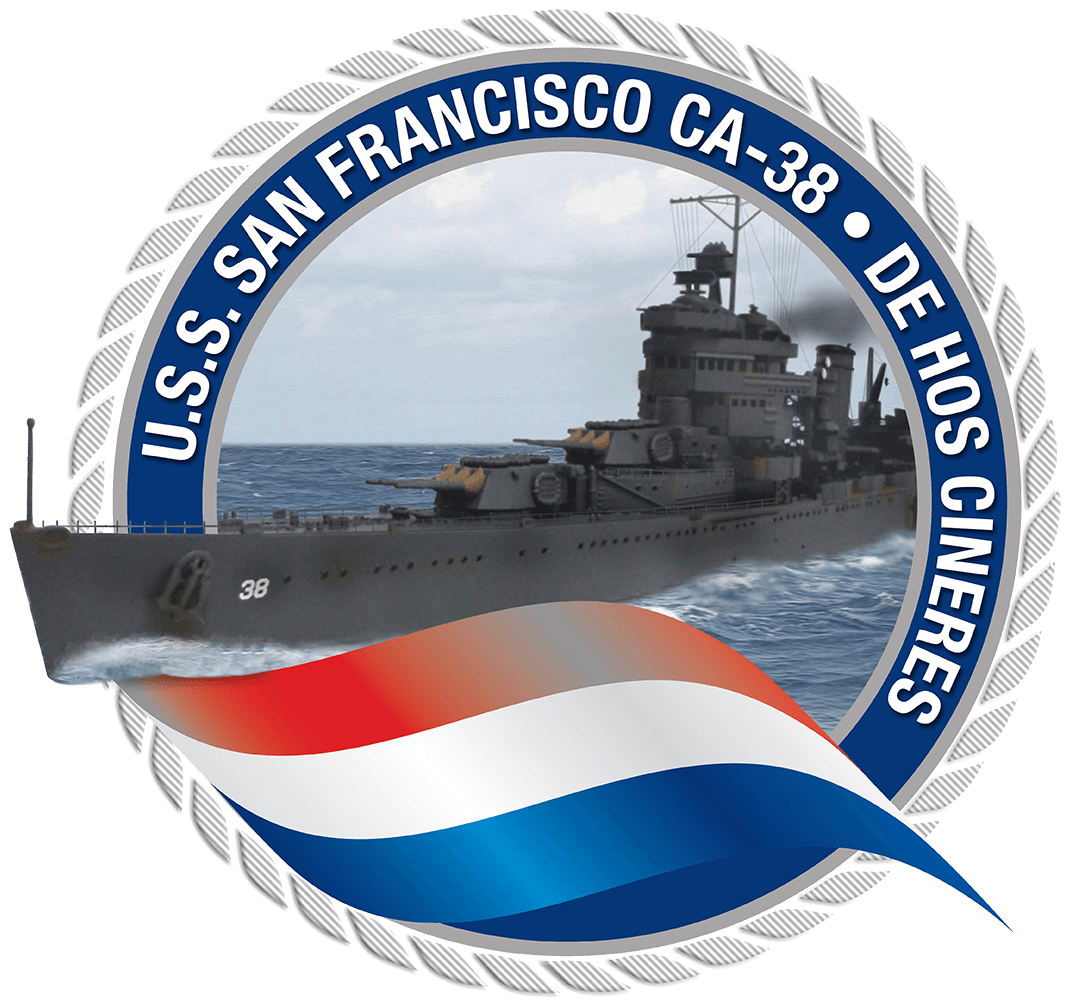Lt. (jg.) Albert T. Harris, USN
Albert Thomas Harris – born on 29 August 1915 in Madison, Ga. – attended North Georgia College and the University of Georgia before enlisting in the Naval Reserve on 10 September 1940. After a period of training – some of which he spent in the battleship New York (BB-34) – he was discharged on 15 June 1941 to accept an appointment as a midshipman in the Naval Reserve the following day. After receiving training at the Naval Reserve Midshipman’s School at Northwestern University, he was commissioned an ensign in the Naval Reserve on 12 September 1941. Then, following instruction in communications, Harris, assigned to the 12th Naval District temporarily on 15 November 1941, awaited transfer to the heavy cruiser San Francisco (CA-38). He reported for duty on board that ship at Pearl Harbor on the afternoon of 6 January 1942.
Two days after he reported, his ship sailed with Task Force (TF 8) as part of the force covering the movement of marines to Samoa. Detached from TF 8 to provide local cover for the newly arrived forces at Tutuila, San Francisco then rejoined her old division, Cruiser Division 6, part of TF 11, soon after clearing Samoan waters on 8 February. Ens. Harris saw his first action on 20 February 1942, when San Francisco screened the aircraft carrier Lexington (CV-2) as TF 11 battled Japanese land-based bombers off Bougainville, in the Northern Solomons. San Francisco received credit for downing one of the attacking aircraft.
On 10 March 1942, the heavy cruiser stood ready to protect Lexington, as that carrier, and Yorktown (CV-5), launched a successful surprise attack on enemy shipping off the New Guinea settlements of Lae and Salamaua. In the spring of 1942, Ens. Harris’ ship escorted convoys between the United States, and Hawaii , Australia and the Fiji Islands.
After seeing a convoy safely to Fiji in July, San Francisco joined the expeditionary force bound for the Solomon Islands, in the initial assualt [sic; assault] phase of Operation “Watchtower” – the invasion of Guadalcanal. His ship covered the landings on 7 August, and, following a logistics period at Noumea, New Caldeonia [sic; New Caledonia], covered a supply convoy to Guadalcanal; during the latter movement, he witnessed the loss of the carrier Wasp (CV-7) on 15 September. He took part on the Battle of Cape Esperance on the night of 11 and 12 October, and participated in the shelling of Japanese supply and ammunition dumps at Koli Point on 4 November.
Newly promoted Lt. (jg.) Harris saw his last action on the afternoon of 12 November 1942, when 21 Japanese twin-engined torpedo planes (Mitsubishi G4M1 “Betties”) attacked San Francisco’s task group near Lunga Point. While commanding the antiaircraft battery on the after machine gun platform, he directed the fire of his 20-millimeter guns on an approaching Japanese torpedo plane that had been set afire by gunfire from the nearby transport McCawley (AP-10). Harris and his gallant gunners unflinchingly remained at their posts, courageously maintaining a heavy fire until the “Betty” crashed into them; the young officer and three of his gun crews died in the fiery crash.
Comdr. Herbert E. Schonland, upon whose shoulders command of the heavy cruiser devolved after Capt. Cassin Young died of wounds suffered in the Naval Battle of Guadalcanal, praised “the remarkable fire discipline and courage” of Harris and his men. “They met their deaths without flinching,” Schonland wrote, “and in a manner which has been an inspiration to us all.” For his conspicuous bravery “in the face of certain death,” Lt. (jg.) Harris was awarded the Navy Cross posthumously.

